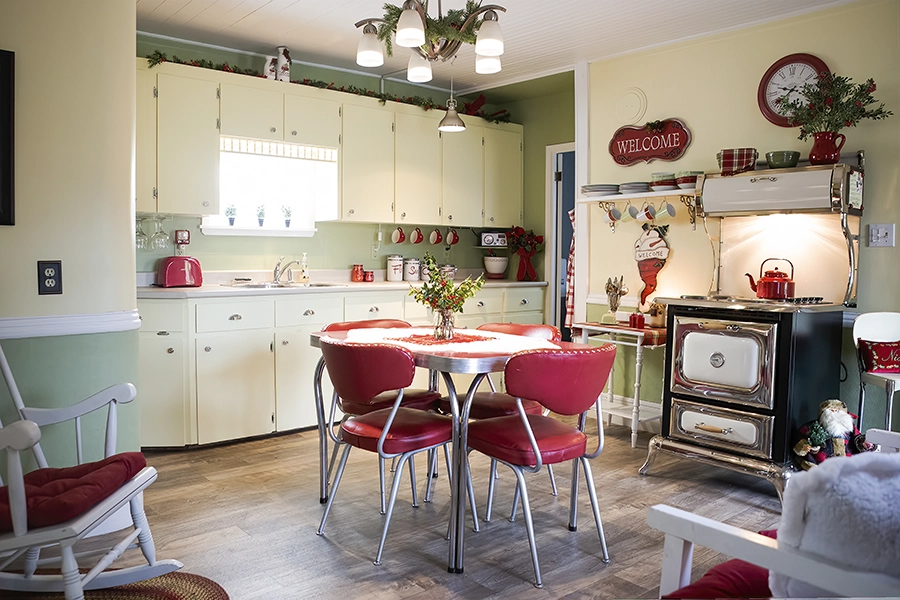On a quiet, tree-lined street in old Charlottetown, Aaron Stavert and Sheri Lee McKenna have built something remarkable. Their recently completed house is a sleek, modern contrast that fits in surprisingly well with the Victorian-era shingled and gabled homes gracing the block.
“It was really important all along to make sure that what we were doing was in keeping with the spirit of the neighbourhood,” says Stavert.

Their house fits snugly inside a tiny 15-by-23-metre city lot. Stavert, an architect, made the small living room feel bigger by connecting the front yard to the backyard with large windows.
Along with its contemporary design, the house has big ecological ambitions. Stavert, architect and owner of Open Practice Collaborative Architecture, designed his house with an eye for LEED gold certification, which would make it the first residential building on Prince Edward Island to achieve that environmental standard.
Leadership in Energy and Environmental Design (LEED) is an international designation for green building design. Nearly all the design choices for Stavert and McKenna’s house are driven by the couple’s desire to leave a small footprint on the environment. LEED standards are flexible, allowing builders to choose strategies that best fit the constraints and goals of their project. “LEED doesn’t dictate,” McKenna says, “it just gives options and guidelines. The scope is very wide for how they give points.”
A project earns points in five areas: sustainable site development, water efficiency, energy efficiency, materials selection and indoor environmental quality. It must also undergo an independent review and can attain four possible levels of certification (certified, silver, gold or platinum).
For example, McKenna and Stavert accrued points for choosing a site close to grocery stores, schools and other community services. Builder Jeremy Lea kept track of the building materials and products, including how much waste and tippage he removed from the site. Finding a place to store and reuse the soil removed while excavating the lot also counts towards earning LEED points.
I like natural, warm and rustic elements and Aaron is all about modern minimalism.
Collaboration is a big part of the LEED process, so McKenna and Stavert were happy to team up with Lea. “He is younger than a lot of builders I’ve worked with before,” says Stavert. “He was experienced enough to be able to read drawings but he was also open to new ideas.”
In nine years in business for himself, Lea has worked on some unconventional projects, including a 24-sided house; the idea of a flat-roofed contemporary home in the downtown core did not intimidate him. “I like doing new things and learning about new approaches,” he says.
Stavert says having a good working relationship with the contractor is a bonus but he sees the client as his most important collaborator. In this case, McKenna was not only Stavert’s partner but also his client. As with any design collaboration, he started off by asking the client to make a wish list.
“That was hard because I had never given a lot of thought to what I wanted in a house,” McKenna says. “I like natural, warm and rustic elements and Aaron is all about modern minimalism. But we learned that our tastes weren’t as different as we thought.”

Homeowners Aaron Stavert and Sheri Lee McKenna relax on the couch in their bright, open-concept living room.
Her desire for warmth and colour balanced nicely with the clean lines of the design Stavert had in mind. “Sometimes you get client requests that you think will ruin the design but then you realize they end up being the best part of the house,” Stavert says.
Space was a big challenge from the start of the project. Both Stavert and McKenna grew up in rural areas and were used to having space to stretch out. But this house had to be shoehorned onto a small, 15-by-23-metre lot in the heart of the city. “The excavator was bigger than the lot,” Lea says with a laugh.
Inside, the house doesn’t feel small at all, which speaks to its clever design. Stavert’s plan makes the most of all available space and reduces the boundary between indoors and outdoors. “One way to make a small living room feel bigger is by connecting the front and back yards,” he says.
He placed floor-to-ceiling windows throughout the ground floor, which is an open-concept space, so that from the front door through to the backyard there are no walls to interrupt the eye. In the open kitchen, strategically placed low and long windows highlight the landscaping, not the neighbours.
The house’s design also maximizes solar gain, in keeping with green building principles. This will factor in to the final assessment for LEED certification, something which Stavert hopes to have completed by the end of the year.
At the foot of the stairs, another floor-to-ceiling window brings in light and makes the space feel airy. Rather than a traditional stairwell, Stavert created an open, louvered effect that makes the stairs the star of the show. And they deserve such pride of place, as these are no ordinary stairs. Each tread is made from an old elm tree that once grew in McKenna’s grandparents’ front yard in Bedeque, P.E.I.
“The tree was coming down anyway because it had Dutch Elm disease,” McKenna says. “But it had so many memories and Aaron said we could try to do something with it.”
They used the best parts of the tree on the stairs and other pieces went into the floors upstairs. A thick slab also waits in the basement to one day become the dining room table.

Aiming to keep costs low, McKenna sourced much of the furniture in her home, including these Scandinavian teak pieces, at auctions and garage sales.
Showcasing in their first home together the tree that served as home base during childhood games of tag is just one way the couple are personalizing the house. “This is our first house and Aaron just started his business, so we had to be conscious of costs,” McKenna says. “But being budget-minded made us more creative.” With that in mind, Stavert’s mother hand-stitched the shower curtain and the drapes in the living room. Both floors feature mid-century modern antiques the couple picked up at auctions and garage sales.
The result is a home that reflects Stavert and McKenna’s individual personalities, as well as their life together as a couple. “This is the first time I’ve had a place that I cared this much about,” McKenna says.



















